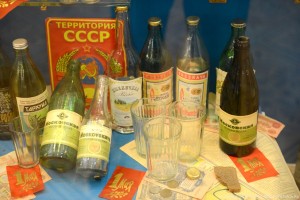5 October Vodka Museum
 It is impossible to ignore Vodka when one is in Russia. The drink has been intrinsically linked with Russian life and lore for centuries. Vodka is as Russian as the brown bear or babushka, caviar and Kalashnikov, or the Matrushka nestling doll.
It is impossible to ignore Vodka when one is in Russia. The drink has been intrinsically linked with Russian life and lore for centuries. Vodka is as Russian as the brown bear or babushka, caviar and Kalashnikov, or the Matrushka nestling doll.
While many visitors will imbibe in the national drink most will ignore the cultural aspect of our national drink, which is as much a sin as drinking too much!
The association with Vodka is an indispensable part of Russian life and a visit to the Vodka Museum in Moscow is as much a window on Russians, life in Rodina as it is to learn about the history of the drink, its introduction and the varying production techniques over the centuries.
Exhibits and portraits from the time of Peter the Great are on display and many other illustrative materials helping visitors understand all aspects of Peter the Great’s era. The museum staff satisfy the curiosity of all those interested in the personal alcoholic preferences of Russian emperors. They will tell what was poured into the famous “Cup of the Big Eagle”, what Peter the Great’s grandson, the “chance visitor of the Russian throne”, Peter the Third drank on each of the 186 days of his reign, as well as what drinks and foods “the Russian Hamlet”, Emperor Paul the First preferred…
The choices was expansive: ‘Smirnovskaya’, ‘Petrovskaya’, ‘Popovka’ (produced at the distillery of widow Popova) and ‘Pshenichnaya’ (wheat), ‘Russkoe Dobro’ (Russian goods) and ‘Dvoinaya Gor’kaya’ (double bitter).
This list could go on almost forever. There were more than 5000 Russian distilleries located in Kazan, Moscow, Nizhny Novgorod and St Petersburg at the beginning of the 20th century.
A part of the collection is devoted to the Great Patriotic War and particularly the introduction of a daily ration of vodka for front line combat soldiers, traditionally called the “Commissar’s 100 Grams”. The recently discovered archived document that stipulated the ration signed by Stalin.
When: we meet outside Partizanskaya metro station at 14.15h
Cost: 1000 rub per person
